Vintage Treasures: Science and Sorcery edited by Garret Ford
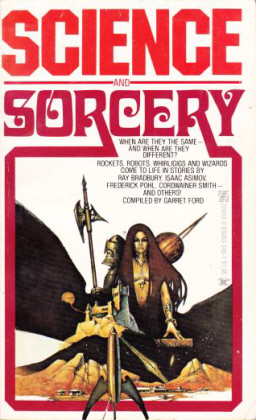 A few days ago I mentioned Martin H. Greenberg’s impressive collection of paperback SF and Fantasy, and the three boxes of that collection I carted back from the Windy City Pulp and Paperback Show. Two are now incorporated in my library. I set aside roughly a dozen of the more interesting titles to talk about here, and the first one is Science and Sorcery, an anthology of pulp SF stories from 1978.
A few days ago I mentioned Martin H. Greenberg’s impressive collection of paperback SF and Fantasy, and the three boxes of that collection I carted back from the Windy City Pulp and Paperback Show. Two are now incorporated in my library. I set aside roughly a dozen of the more interesting titles to talk about here, and the first one is Science and Sorcery, an anthology of pulp SF stories from 1978.
It was published by Zebra, a pretty low-budget outfit. So low-budget, in fact, that it doesn’t even have a table of contents.
Who publishes an anthology without a table of contents? That’s pretty edgy. A publisher desperate to save paper, apparently. The whole thing feels slapped together, from the introduction on the back of the title page to the oddly formatted first story, Cordwainer Smith’s “Scanners Live in Vain” (page 3).
Fortunately, science fiction fans are a diligent and industrious lot, and I found a complete TOC online (at the book’s Wikipedia page, believe it or not). Here it is:
- “Scanners Live in Vain”, by Cordwainer Smith
- “The Little Man on the Subway,” by Isaac Asimov & James MacCreigh
- “What Goes Up,” by Alfred Coppel
- “Kleon of the Golden Sun,” by Ed Earl Repp
- “How High on the Ladder?” by Leo Paige
- “Footprints,” by Robert E. Gilbert
- “The Naming of Names,” by Ray Bradbury
- “The Eyes,” by Henry Hasse
- “The Scarlet Lunes,” by Stanton A. Coblentz
- “Demobilization,” by George R. Cowie
- “Voices from the Cliff,” by John Martin Leahy
- “The Lost Chord,” by Sam Moskowitz
- “The Watchers,” by R. H. Deutsch
- “The Peaceful Martian,” by J. T. Oliver
- “Escape to Yesterday,” by Arthur J. Burks
A pretty eclectic mix, to be honest. Can’t remember the last time I saw an anthology with fiction by Sam Moskowitz. Or James MacCreigh, Ed Earl Repp, Leo Paige, Robert E. Gilbert, George R. Cowie, John Martin Leahy, R. H. Deutsch, or J. T. Oliver, for that matter. I don’t want to say this anthology primarily consists of nobodies, but it looks like this anthology primarily consists of nobodies.
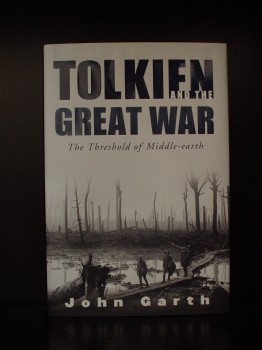 As a subscriber to the Mythsoc listserv, I was very grateful to find a link from Michael Martinez — proprietor of the fine Middle-earth.xenite.org website — to a recent interview conducted with J.R.R. Tolkien scholar, John Garth, author of Tolkien and the Great War: The Threshold of Middle-earth (Houghton Mifflin Company, 2003). It’s a fascinating read and worth checking out;
As a subscriber to the Mythsoc listserv, I was very grateful to find a link from Michael Martinez — proprietor of the fine Middle-earth.xenite.org website — to a recent interview conducted with J.R.R. Tolkien scholar, John Garth, author of Tolkien and the Great War: The Threshold of Middle-earth (Houghton Mifflin Company, 2003). It’s a fascinating read and worth checking out; 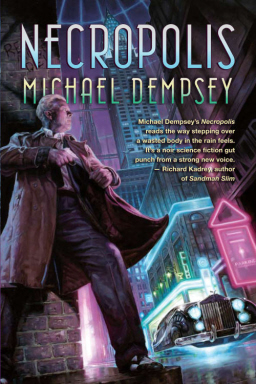
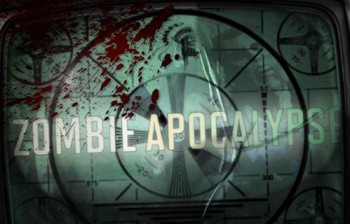
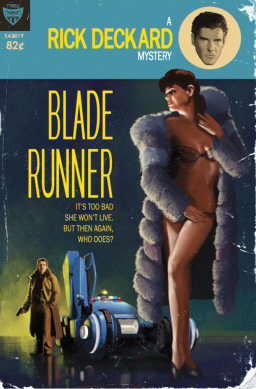
 Bury Elminster Deep
Bury Elminster Deep
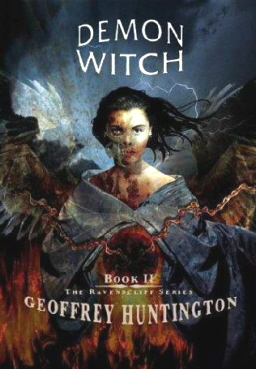
 The premise of this podcast series is that tourists came from as far as the Faerie Kingdom and Hell to visit the 1893 Chicago World’s Fair and, once it was over, decided to stay. These sub-cultures continued to co-exist with every other immigrant community in Chicago, integrating just enough to go unnoticed by most people. The Burnham Society was established to intervene in those situations where the sub-cultures don’t peacefully co-exist. The organization is perpetually trying to maintain its lofty goals while dealing with petty day-to-day politics (much like its namesake, architect Daniel Burnham).
The premise of this podcast series is that tourists came from as far as the Faerie Kingdom and Hell to visit the 1893 Chicago World’s Fair and, once it was over, decided to stay. These sub-cultures continued to co-exist with every other immigrant community in Chicago, integrating just enough to go unnoticed by most people. The Burnham Society was established to intervene in those situations where the sub-cultures don’t peacefully co-exist. The organization is perpetually trying to maintain its lofty goals while dealing with petty day-to-day politics (much like its namesake, architect Daniel Burnham).